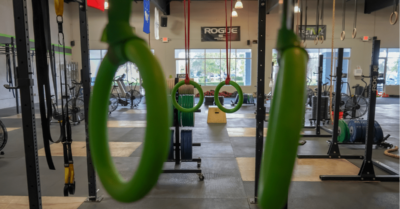2020 will forever stand out in the history books due to the unprecedented effects of COVID-19. Over the last year, fitness businesses worldwide have been forced to close, with many gym owners making a quick pivot to online workouts to reach their members at home.
While initially, the move to digital was a matter of survival, a lot of fitness businesses have been able to grow and thrive amid the pandemic: Carpe Diem BJJ Singapore successfully diversified its offering and increased active memberships by 500% throughout COVID-19 closures.
Now, as vaccines roll out across the world, there is a light at the end of the tunnel: at some point this year, gyms will reopen, and this time around, they’ll stay open. Here, we will look at what to expect as you reopen and everything you need to reopen successfully.
Skip ahead to:
- What to Expect From Members As Gyms Reopen
- What This Means For Gyms and Studios
- 7 Steps to Reopening Your Gym Successfully
What to Expect From Members As Gyms Reopen
In this section, we’ll look at some of the current trends among gym-goers and what this may indicate for the fitness industry as various markets open back up.
Data from the IHRSA confirms that 94% of gym-goers plan to return to their regular routines once gyms reopen, a trend that is mirrored in Glofox data collected over the last year. Despite the popularity of digital fitness throughout lockdown, our data reflects strong consumer demand for in-gym experiences. The number of members returning to physical gyms accelerates after each lockdown, while digital demand decreases in line with this shift:
- With global regions in and out of lockdown, 18% of classes in early 2021 took place online, slowing to 15% in recent months as parts of the world open back up.
- Each time lockdown restrictions lift, the number of members returning to the gym accelerates.
After spending so long socially distanced and isolated from ‘normal’ experiences, members want their gyms back. This demand is already fuelling strong recovery for gyms and studios in areas where lockdowns have lifted: In Australia and Singapore, gyms are currently operating at 95-100% of pre-lockdown revenue levels, with recovery in some APAC countries surpassing pre-covid numbers. APAC’s quick rebound indicates that revenue in countries worldwide will continue growing as markets leave lockdown throughout 2021.
What This Means For Gyms and Studios
The core takeaway from these insights is that while digital fitness has surged through the pandemic, it’s not the be-all-end-all for the industry’s future. There is positive movement in member return and revenue recovery across global markets as various regions open back up.
Online fitness has and will continue to play an essential part in running a thriving fitness business in the future; we will continue seeing more gyms and studios embrace a hybrid business model moving forward. And while online classes will remain, their popularity will likely decline as people can get back into the gym.
The flexibility of online workouts can no longer be denied, and consumers will expect to have convenient fitness options to choose from. But in a post-covid world, digital fitness will be a service that compliments the overall member experience – not one that replaces the need for physical gyms entirely. This is already happening across the UK, where lockdown restrictions have recently eased, allowing gyms to reopen. The BBC reports that most of the UK’s large gym chains will continue the online service they have provided over the last 12 months:
- David Lloyd believe members will use what’s offered online as “complementary to their experience, rather than as a replacement.”
- PureGym says it is “confident that gyms and home workouts can co-exist” in the future and will continue to provide all the online services it introduced during the pandemic.
- GymBox says it will continue to invest in its online classes as people return to its London-based spaces.
7 Steps to Reopening Your Gym Successfully
Now that we’ve highlighted the movement in industry trends for the near future, we will cover the essentials for reopening your gym in a post-covid world. Each point will be relevant to your business at different stages, depending on the restrictions in your local area. But planning now will equip you to take on each step as it comes and reopen stronger than ever.
1. Health and Safety Checklist
Health and safety are the most critical factors to be considered when reopening your gym. At a minimum, gyms and studios must enforce social distancing and enhanced cleaning measures when they reopen. They also need to have adequate staffing and cleaning supplies to implement these measures successfully. Gyms will also have to be guided by the local authorities on the correct protocol to follow as some regions and countries may differ on this.
Last year, after the first wave of restrictions were lifted, IHRSA released a list of 18 questions you should ask yourself as a gym owner when planning your re-launch. This list is still relevant to reopening today, and below we have summarized the three health and safety categories.
Containment: This section looks at the steps you need to put in place to maintain social distancing. IHRSA quotes Pure International Group CEO Colin Grant, who says that following the first lockdown restrictions lifting last year, gyms in China allowed limited numbers of members in 90-minute blocks with an hour of deep cleaning done between each block.
For group classes, you will need to ensure there is adequate space between each class member. For a general gym area with weights or machines, you will need to put down markers to make sure gym members stay a safe distance apart.
Cleaning and Sanitation: An essential thing to do here is to have a schedule for deep cleaning your facility and build an inventory of cleaning supplies that are stocked up regularly. IHRSA also advises that you remove any hard-to-clean equipment such as bands and foam rollers.
Staff will need to be provided with protective materials such as face masks and gloves if there is a readily available supply. They also need to be on hand to enforce any measures necessary to keep members safe.
The Customer
Engagement Playbook
for Your Fitness
Business
Discover more Source: IHRSA
Staffing: Gyms and studios will likely go through different phases of reopening to maintain good health and safety. You will need to figure out what staff are essential for the first phase of reopening. Training for this staff will need to be organized. It’s recommended that you send out your health and safety playbook in advance of staff returned so they can study it.
Before staff return, try and ensure that they have received a test to clear them of COVID-19 if this is possible. It is important to have key staff do this as soon as they can as result times for tests can vary from country to country. You should also put in place a system for checking in on their health and temperature regularly.
2. Financial Planning as Your Reopen
Even if you have been running your business online for the past 12 months with success, reopening presents a whole host of new challenges to overcome.
The reality is that the economy is not in a great place at the moment, and the industry itself has changed fundamentally. On top of that, your finances may not be in the same place as they were when you opened up. It’s essential as you plan your reopening that you’re on top of your finances and what they may look like over the coming months. You will need to consider all of your revenue streams, whether that’s from recurring memberships, online classes, or in-person sessions. Check out this post for more advice on financial planning for your future.
3. Reassure Members and Generate Excitement
Everyone from independent studios to large fitness franchises will need to keep their facilities as safe as possible when it comes to reopening. But it’s also crucial that you have a communications strategy in place to reassure members of everything you’ll be doing to run a safe facility.
Orangetheory has stayed at the top of its game amid lockdowns, catering to its members at home with online workouts and clearly communicating the procedures in place as various locations can reopen. The brand was ready with a video to educate and inform members of new protocols introduced last year and get them excited to go back to the studio. The clip is just over 2-minutes in length and invites members to see for themselves how Orangetheory is preparing its studios for reopening:
Now, even with vaccine rollouts underway, members will want solid reassurance of the measures you have in place to ensure their safety. Here are a couple of keys things you can do:
- Communicate with members early and regularly when reopening is confirmed.
- Send them a detailed guide on the new safety measures in your fitness facility.
- Be available for any questions and concerns members have – don’t leave them in the dark.
- Make it clear that you are still running online classes as an option.
4. Cater to Members Both In-Person and Online
Shortly after gyms around the world were closed for the first time last year, Gym Launch founder Alex Hormozi appeared on our podcast and gave some good insights into the future of the fitness industry. One interesting point he made was that while there will be a lot of people desperate to come back to the gym, there will also be a good percentage who find at-home workouts more convenient. As we mentioned in the first section of this article, this is a theme in today’s fitness industry as markets are leaving lockdown: people are keen to return to gyms, and there is still a demand for digital fitness.
Looking to the future, you will need to develop a business that caters to both of these markets. Give members the option to do online workouts if they can’t get into the gym. This will also allow you to provide better value for the service you are offering and also allow you to charge a good price for it. Take a listen to this episode of The Fitness Founders Podcast with gym owner Jack Thomas for more information on pricing and packaging your offer.
5. Develop a Safe Environment and Schedule for Members
In the final section on operations in IHRSA’s 18 Questions article, they again reference Colin Grant and his insights into gyms in China. Fitness facilities operated without changing rooms to stop the risk of infection, limiting access to bathrooms only. This is maybe something you will have to consider when you first reopen.
Use your gym management software to edit the number of classes and the attendance within each class. Realistically, you may only be able to open for short blocks of time with limited capacity to allow for deep cleaning in between classes.
6. Accountability Is Still the Key Differentiator
Changing your business model from brick and mortar to online and now to hybrid in such a short space of time can cause some processes to change quickly too. Accountability needs to remain consistent throughout. If you get accountability right, members are more likely to get the results they want and are more likely to continue paying their membership, regardless of your business model.
As Alex Hormozi said in the podcast episode mentioned earlier, “people pay for you to pay attention,” and you need to ensure your attention is always on the member and keeping everyone in your community on track.
7. Get Into a New Beginnings Mindset
Consider the way you launched your business originally and apply some of those tactics now. Begin pre-selling over the phone if possible and generate some excitement in your local community about the reopening. You can use both your digital and onsite offering as part of your pre-sales strategy; striking a balance between the two is a great way to attract new members.
In Summary
When your local authority allows fitness businesses to open, you must consider all the factors involved in this process, most importantly, the health and safety of your staff, your members, and the wider community. While hopefully, over the last 12 months, you have been successful as an online gym, you can now look forward to reopening – and this time staying open. Now is the time to prepare for making the most of offering both online and in-person services – and bouncing back with a business that’s stronger than ever before.















